Atmospheric Science
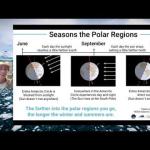
Seasons in the Antarctic
Join McMurdo scientist, Ian Geraghty, from McMurdo Antarctica for a 10-15 minute lesson on Seasons in Antarctica, followed by a Q&A. In this lesson, we will cover what causes the seasons and why is Antarctica's seasons so unique; Learn about Polar Night and Day and how life adapts to these seasons.
Science Show & Share Atmospheric Science, Polar Science
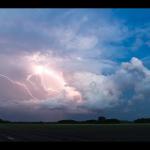
Meteorología con Arelis M. Rivera-Giboyeaux
Si te llaman la atención los eventos del tiempo como las tormentas eléctricas, los huracanes y los tornados, esta presentación es para ti. Arelis M. Rivera-Giboyeaux, meteoróloga del Departamento de Energía compartirá su experiencia en el campo de las ciencias atmosfericas.
CIRES/NOAA Serie La Ciencia-en-Casa Atmospheric Science, Climate and Weather

The Changing Arctic Carbon Cycle with Aleya Kaushik
In this presentation, Dr. Aleya Kaushik, a CIRES postdoctoral fellow working on water-carbon cycle interactions at NOAA GMD, presents on the Arctic Climate Cycle.
CIRES/NOAA Science@Home Atmospheric Science, Climate and Weather, Community Action and Solutions

Huracanes con Rosimar Rios-Berrios
La Dra. Ríos-Berrios presentará su investigación sobre huracanes.
Dr. Rios-Berrios also gave this presentation in English, here.
CIRES/NOAA Serie La Ciencia-en-Casa Atmospheric Science, Climate and Weather, Water and Oceans
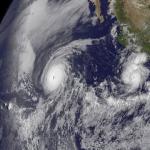
Hurricanes with Rosimar Rios-Berrios
In this webinar, Dr. Rosimar Rios-Berrios presented on her research in hurricanes, cyclones, and forecasting.
Dr. Rosimar Rios-Berrios works in the Mesoscale & Microscale Meteorology Lab at UCAR in Boulder. Her research broadly…
CIRES/NOAA Science@Home Atmospheric Science, Climate and Weather, Water and Oceans

Wildfires and Insects Kill Trees: with Mike Koontz
Dr. Koontz presented on: Understanding Where Wildfires and Insects Kill Trees Using Drones and Satellites
Michael is a postdoc with the Earth Lab and CIRES at the University of Colorado in Boulder working with …
CIRES/NOAA Science@Home Atmospheric Science
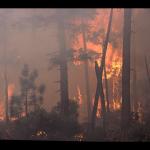
Wildfires & Crop Burning Smoke with Shuka Schwarz
Joshua (Shuka) Schwarz is a research scientist in NOAA's Chemical Science Laboratory. In this presentation he talks about wildfire and crop burning smoke and what it's like to be a scientist.
CIRES/NOAA Science@Home Atmospheric Science, Climate and Weather
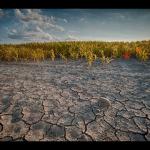
Flash Droughts with Andy Hoell
Dr. Hoell presents on: Flash Drought
(Flash Droughts are defined as an event with greater than or equal to two categories degradation in a four-week period based on the U.S. Drought Monitor.)
Andy Hoell works in NOAA's Physical Sciences Laboratory. He researches the predictability of weather and…
CIRES/NOAA Science@Home Atmospheric Science, Climate and Weather
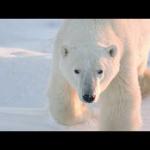
M5 L4: Adaptations to Life in Sea Ice with Dr. Jeff Bowman
This video is part of a collection - “Frozen in the Ice: Exploring the Arctic." Check out the MOSAiC page for more details.
In this specific lesson, Dr. Jeff Bowman touches on differences between the adaptive strategies of warm vs.…
MOSAiC Atmospheric Science, Polar Science

M5 L3: Life in Sea Ice with Dr. Jeff Bowman
This video is part of a collection - “Frozen in the Ice: Exploring the Arctic." Check out the MOSAiC page for more details.
In this specific lesson, Dr. Jeff Bowman will teach you about metabolic challenges and opportunities present…
MOSAiC Atmospheric Science, Polar Science

M4 L8: Why Study Sea Ice? with Dr. Marcel Nicolaus
This video is part of a collection - “Frozen in the Ice: Exploring the Arctic." Check out the MOSAiC page for more details.
In this specific lesson, Dr. Marcel Nicolaus describes his role as MOSAiC's sea ice team leader and why…
MOSAiC Atmospheric Science, Polar Science, Water and Oceans

M4 L6: Sea Ice Kinetics with Dr. Jennifer Hutchings
This video is part of a collection - “Frozen in the Ice: Exploring the Arctic." Check out the MOSAiC page for more details.
In this specific lesson, Dr. Jennifer Hutchings defines sea ice kinetics. Throughout the MOSAiC expedition,…
MOSAiC Atmospheric Science, Polar Science
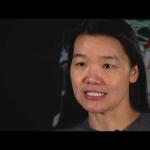
M3 L5: Ocean Chemistry and Productivity with Dr. Allison Fong, Part 1 of 2
This video is part of a collection - “Frozen in the Ice: Exploring the Arctic." Check out the MOSAiC page for more details.
In this specific lesson, Dr. Allison Fong introduces you to nutrient biogeochemistry in the Arctic Ocean.…
MOSAiC Atmospheric Science, Polar Science
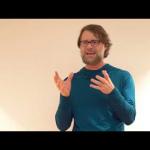
M2 L6: Why Study the Atmosphere? with Dr. Matthew Shupe
This video is part of a collection - “Frozen in the Ice: Exploring the Arctic." Check out the MOSAiC page for more details.
In this specific lesson, Dr. Matthew Shupe breaks down the work of MOSAiC's atmosphere team. Following team…
MOSAiC Atmospheric Science, Climate and Weather

M2 L3: Earth's Atmosphere with Dr. Chris Cox
This video is part of a collection - “Frozen in the Ice: Exploring the Arctic." Check out the MOSAiC page for more details.
In this specific lesson, Dr. Chris Cox will teach you about Earth's atmosphere. You'll learn about its…
MOSAiC Atmospheric Science, Polar Science
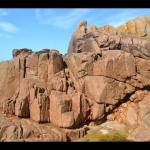
The Formation of New Guinea & History of Our Climate with Peter Martin
Dr. Peter Martin presented on his research in and of New Guinea. In particular, when did it form and how it impacted historical climate change.
This webinar is part of the CIRES/NOAA Science-At-Home series.
CIRES/NOAA Science@Home Atmospheric Science, Climate and Weather
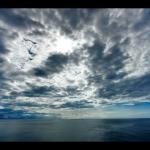
Ocean-Atmosphere Interactions with Elizabeth Thompson
In this webinar, Dr. Elizabeth Thompson discussed how learning about weather can also teach us a lot about the ocean - it's the same but backwards. The oceans impact weather across the entire world, but these invisible interactions are some of the most difficult to measure or predict. This webinar is part of…
CIRES/NOAA Science@Home Atmospheric Science, Water and Oceans
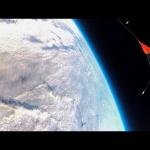
Stratospheric Polar Vortex & Weather with Amy Butler
In this webinar, Dr. Amy Butler talked about the Polar Vortex. She focused on why she became an atmospheric scientist, presented a brief overview of the stratosphere and the ozone layer, and discussed how we might use information about the stratospheric polar vortex to make extended-range weather…
CIRES/NOAA Science@Home Atmospheric Science, Climate and Weather, Polar Science

Precipitation with Janice Bytheway
In this webinar, Dr. Janice Bytheway talked about precipitation - how it forms, and a little bit on how we observe and predict it.
CIRES/NOAA Science@Home Atmospheric Science, Climate and Weather

Climate and the Colorado River Basin Past, Present, and Future
This video features Jeff Lukas from CIRES' Western Water Assessment who discusses the overall climate patterns of the Colorado River Basin, and how we can use this information to study the past, present, and future climate of the western United States. This video is part of the Water in the Western US lecture…
Water in the Western US Atmospheric Science, Climate and Weather, Water and Oceans

ICEE: Pieter Tans
How do we know that the increase in atmospheric carbon dioxide is connected to human activity? In this lecture, Pieter Tans gives an overview on the history of the science and modeling on the subject that gives us necessary perspectives for studying carbon dioxide.
Atmospheric Science, Climate and Weather
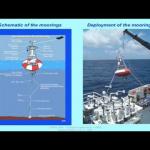
COSEE 2009 "Air-Sea Interaction and Climate"
Jeff Hare gives a lecture about air-sea interactions and their effect on biological processes during COSEE 2009.
Atmospheric Science, Water and Oceans

COSEE 2009 "Wind Patterns and Ocean Currents"
Lesley Smith goes over the basics of global wind patterns and ocean currents during COSEE 2009.
Atmospheric Science, Climate and Weather, Water and Oceans
